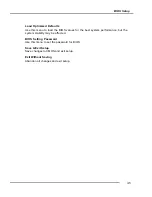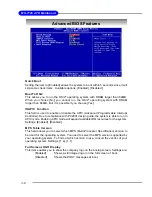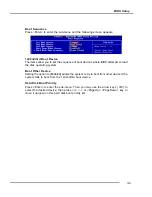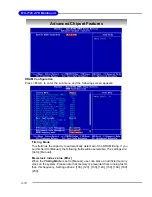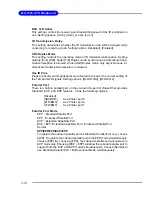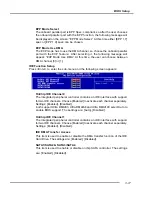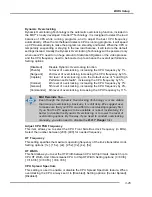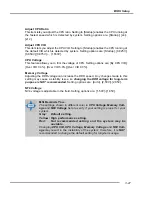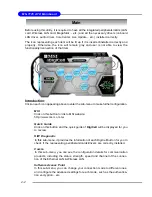
3-16
MS-7125 ATX Mainboard
RxD, TxD Active
This setting controls the receiving and transmitting speed of the IR peripheral in
use. Setting options: [Hi,Hi], [Hi,Lo], [Lo,Hi], [Lo,Lo].
IR Transmission Delay
This setting determines whether the IR transmission rate will be delayed while
converting to receiving mode. Setting options: [Disabled], [Enabled].
UR2 Duplex Mode
This setting controls the operating mode of IR transmission/reception. Setting
options: [Full], [Half]. Under [Full] Duplex mode, synchronous, bi-directional trans-
mission/reception is allowed. Under [Half] Duplex mode, only asynchronous, bi-
directional transmission/reception is allowed.
Use IR Pins
Please consult your IR peripheral documentation to select the correct setting of
the TxD and RxD signals. Setting options: [RxD2/TxD2], [IR-Rx2Tx2].
Parallel Port
There is a built-in parallel port on the on-board Super I/O chipset that provides
Standard, ECP, and EPP features. It has the following options:
[Disabled]
[3BC/IRQ7]
Line Printer port 0
[278/IRQ5]
Line Printer port 2
[378/IRQ7]
Line Printer port 1
Parallel Port Mode
SPP : Standard Parallel Port
EPP : Enhanced Parallel Port
ECP : Extended Capability Port
ECP + EPP: Extended Capability Port + Enhanced Parallel Port
Normal
SPP/EPP/ECP/ECP+EPP
To operate the onboard parallel port as Standard Parallel Port only, choose
[SPP]. To operate the onboard parallel port in the EPP mode simultaneously,
choose [EPP]. By choosing [ECP], the onboard parallel port will operate in
ECP mode only. Choosing [ECP + EPP] will allow the onboard parallel port to
support both the ECP and EPP modes simultaneously. Choose [Normal] to
use Standard Parallel Port + Bi-Directional Mode simultaneously.




